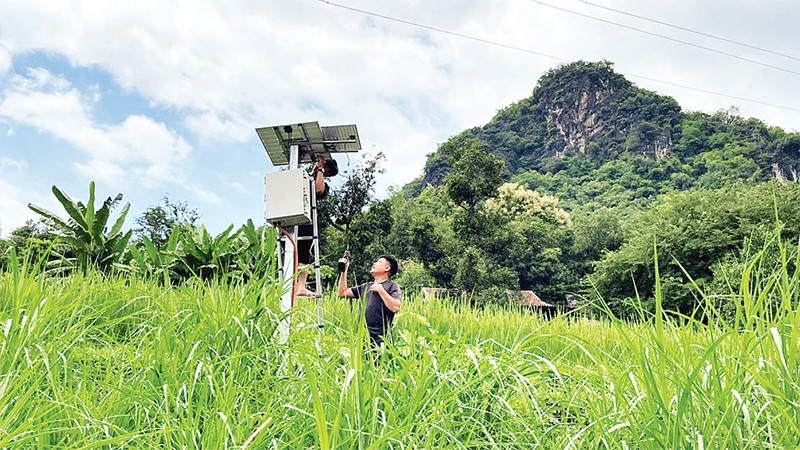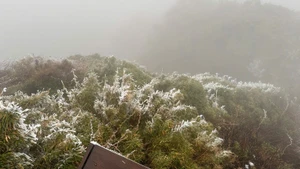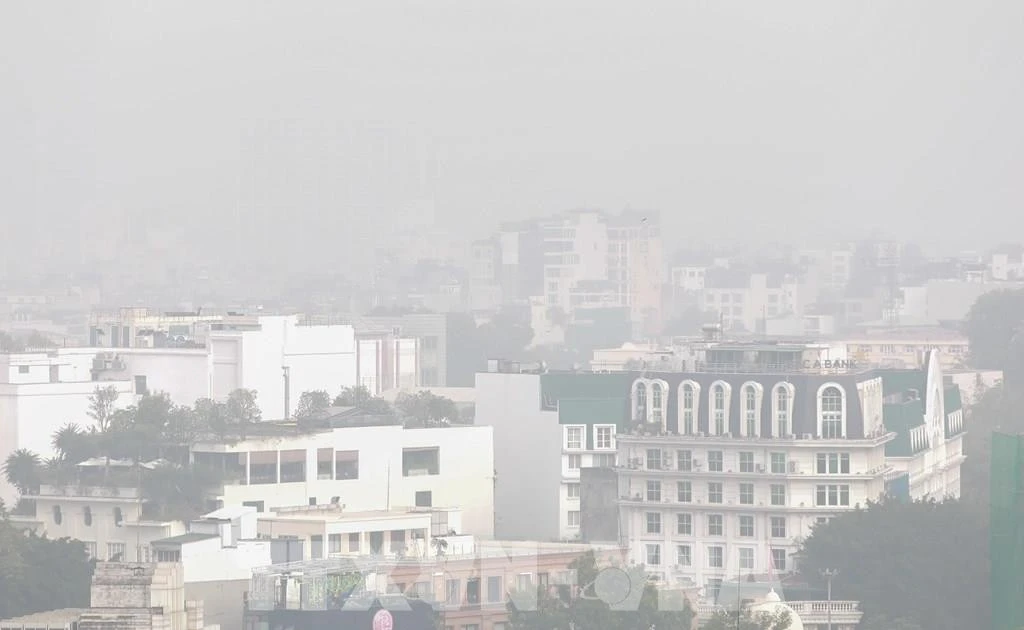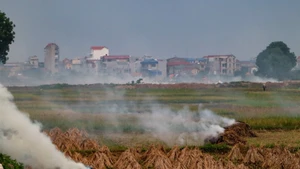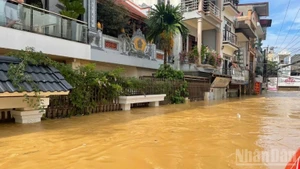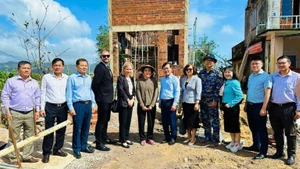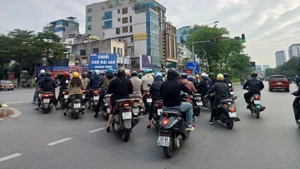If people had access to early warning information, they would be better prepared to respond. Therefore, a community-based early disaster warning system is once again under consideration as an effective solution to proactively prevent and mitigate the impact of natural disasters.
After each disaster, given the significant loss of life and property, many wonder if early warnings could help reduce damage. In response, Associate Professor Dr Tran Tuan Anh, Vice President of the Vietnam Academy of Science and Technology and Director of the Institute of Geology, stated that for landslide early warnings, methods such as installing automated monitoring devices to measure the movement of sliding masses and slope displacement could be used. When movement surpasses disaster-triggering thresholds, the system will alert authorities and residents to evacuate in time.
Since the 1990s, the Institute of Geology has implemented advanced technology in practice to establish automated landslide monitoring stations in several areas, such as Hoa Binh, Ha Giang, and the Central Highlands provinces.
However, this method faces limitations as the mountainous regions of Vietnam contain countless slopes and hillsides at risk of landslides, with insufficient funds and manpower to cover them all. Additionally, transmitting alerts becomes challenging to central analysis centres in areas without cell signals, internet, or electricity.
Regarding flash flood early warnings, their sudden and rapid nature poses further challenges for early detection, with scientific and technological research still in trial phases.
Given these realities, scientists emphasise the need for local officers, village leaders, disaster response teams, and community members to detect early signs of landslides and flash floods.
Since 2021, a group of scientists from the Institute of Geology has been conducting a state-level project to develop a community-based early warning system for landslides, mud floods, and flash floods in key mountainous areas of northern Vietnam.
The project’s goal is to establish a scientific and practical foundation for early warnings of landslides, mud floods, and flash floods at the village level, involving local communities in northern mountainous provinces.
As part of the project, residents in three trial areas, Ban Ria Commune (Ha Giang), Cat Thinh Commune (Yen Bai), and Chieng Dong Commune (Son La), serve as essential links in the early warning system, alongside monitoring stations and data analysis centres.
Dr Dao Minh Duc, the project lead, noted that while villagers have firsthand knowledge of at-risk landslide sites, their disaster preparedness skills remain limited. Therefore, a key task of the project is to train residents to identify early signs of landslides and flash floods. Any community detections are shared via the early warning system.
With monitoring data, experts analyse and issue warnings to the public. Trial areas have also formed on-site response teams for quick alerts in emergency situations.
By September 2024, the project completed a guide on identifying early signs of landslides, flash floods, and mud floods, detailing indicators such as hillside cracks, discoloured streams, leaning trees on slopes, seepage on retaining walls, and shifting rocks and soil.
The project also developed criteria for community-based disaster alert levels, guiding local response teams in emergency notification procedures.
According to Dr Dao Minh Duc, initial results have enabled local authorities to implement more proactive and thorough disaster prevention measures. The early warning indicators have proven useful in helping villagers detect hillside cracks, rising floodwaters, discoloured water, water seeping down retaining walls, and leaning trees on slopes. Local authorities now have an initial understanding of high-risk landslide sites.
Village-level response team members are gradually learning alert procedures, setting up warning stations, monitoring developments, and planning evacuations. From April to September 2024 alone, Ban Ria Commune reported 62 landslide events without any casualties. “Most importantly, community awareness of disaster prevention has improved, along with interaction with experts to refine early warning processes,” Dr Dao Minh Duc shared.
Based on data collected from the system and satellite information, the project has trialled text alerts to local disaster response teams, with most warnings aligning well with actual disaster events in the trial areas.
The research team also noted that early warnings have helped residents make informed decisions in their daily lives and work. Dr Dao Minh Duc explained that, due to frequent creek crossings in villages, people typically cross dry creek beds. However, when alerted to rising water levels, residents avoid crossing flood-prone areas. Disaster response team members appreciate the value of the project’s early warning bulletins, finding them well-suited to the community’s needs.
Associate Professor Dr Vu Cao Minh, former Vice Director of the Institute of Geology, believes the project has taken the right approach by emphasising the importance of community roles in proactive disaster prevention, signalling a time for mountain disaster prevention to rely fundamentally on local communities.
The project is expected to conclude in 2025, with a village-level early warning system for landslides, mud floods, and flash floods set to be handed over to disaster management units in Yen Bai, Son La, Ha Giang, and other high-risk landslide and flash flood areas.
